Wandering around Barcelona as a tourist is like being the needy one in a doomed relationship. You might be in love with its chilled-out coolness tinged with bad guy flintiness but it veers between hating you and not giving you a second thought.
I’m not certain, but I don’t think our love affair was always so one-sided.
The first time I saw Spain’s second city and Catalonia’s first was in the dead of a 1990s winter when I arrived in the heartland of European resistance and revolution alone, without so much as a hotel booked or a guidebook bought.
I got lost for days, wandering the Gothic Quarter’s labyrinthine streets, marvelling at the chutzpah of the three card tricksters stealing money from tourists on La Rambla.
Irish Tesla owners on Musk’s EV company: ‘I’m either stuck with it, or I have to take a big financial hit’
‘Our daughter is almost 40 and moving out soon, but she has told her son that he can stay with us’
‘I grew up in an apartment in another country. I bought an apartment in Dublin and had to get out after a year’
The high point – literally – was a lonely tour of the vertiginous Nou Camp, home of the city’s storied football club, where I left a lucky penny wedged under a seat in the top tier. Months later it was the site of the Manchester Miracle starring Teddy Sheringham and Ole Gunnar Solskjaer. I like to think my penny played its part.
I’ve returned again and again, alone and in groups and coupled up. I’ve been with my young kids and with my teenagers. I was in the city hours after the 2004 terror attacks in Madrid in which almost 200 people died, an atrocity that brought Barcelona’s residents on to the streets banging pots and pans in fierce protest at the murders. I was in Barcelona days after the 2017 terror attacks on La Rambla and in the nearby seaside town of Cambrils. That horror saw the same indomitable “No pasarán” attitude of a people refusing to be cowed by cowards.
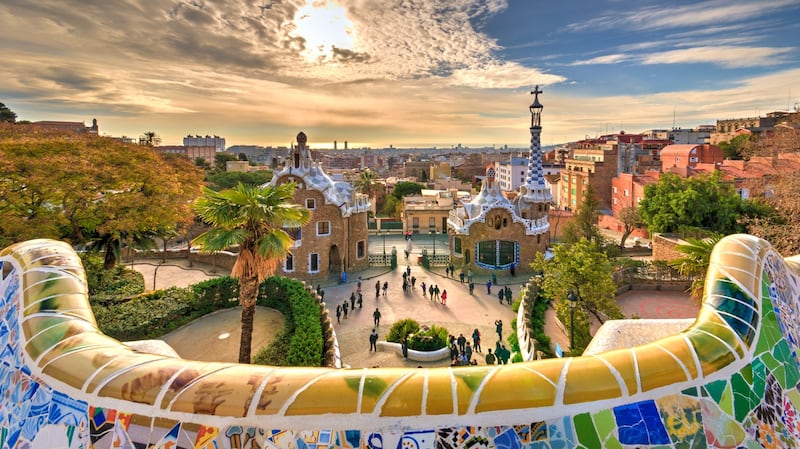
But while I’ve only fallen more in love with Barcelona with every visit, I know my love is not reciprocated and the disinterest of times past has become dislike.
At least that’s according to the graffiti and the posters on the walls and lamp-posts leading up to Parc Guell, the Guadí-designed park that looks down on the city much like the city is looking down on me.
Every few steps, posters and paint etchings tell tourists to go home and, to be honest, with a six-year-old on my shoulders as we ascend, I feel like doing just that. Having just departed damp, dreary Dublin and its February miserableness, I’m not dressed for what would easily pass for a glorious summer’s day in Ireland and am sweating like a Bikram Bunny as we walk.
But like a Sherpa carrying a well-heeled explorer up Everest I trudge gamely on. Obviously, we don’t have entrance tickets because I’ve assured my family such advance planning is unnecessary in a laid-back place like Barcelona. And sure, even if we can’t get into the ticketed monumental parts of the park, there’ll be plenty to see in the free-for-all parts.
I’m wrong on both counts.
The signs at the gates say the visiting slots for today are booked up while surly staff manning turnstiles curl their lips like tanned Billy Idols when I ask in poor Spanish how we get to the free parts.

Shrinking from their withering glares, I take to Google, which tells me things changed just before the pandemic and now the whole park demands a ticket.
So we turn around and trudge back down the hill past all the posters telling us to go home.
But before that disappointment, there is a voiceless row.
Our Airbnb in the swanky Gracia neighbourhood is lovely and we get there after a short cab ride from the airport on a Friday night. After racing around for a few minutes, the children crash out followed by the adults. It is no later than 11pm.
On a Friday night. In Spain.
The following morning I go in search of pastries and find a cross note pinned to our door by a neighbour complaining about last night. Suddenly the banging sound coming from our floor as we brushed teeth makes more sense. “You made too much noise, have some respect,” the note reads in Spanish.
We set off exploring but not before my wife buys chocolates and leaves them with a note of apology on our cross neighbour’s mat.
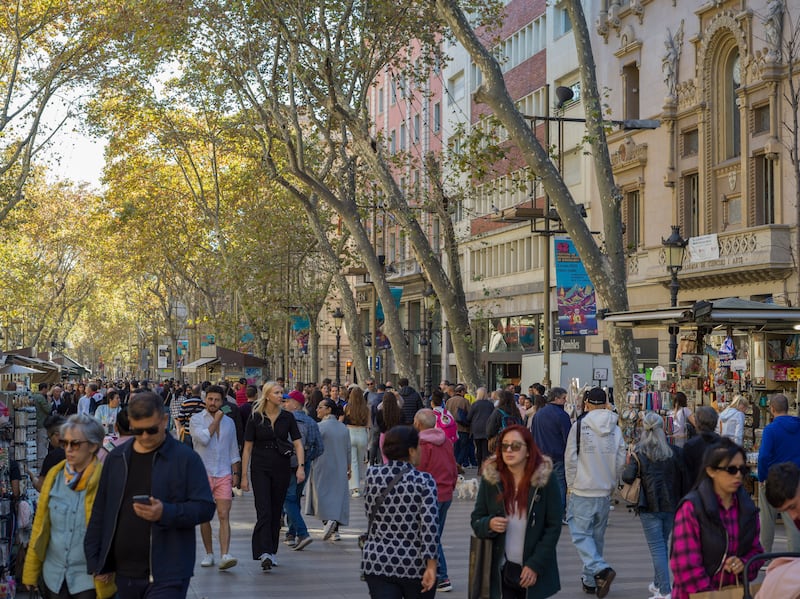
We stroll down Passeig de Gracia past all the high-end designer shops and on to the Placa de Catalunya, the beating heart of Barcelona where we dodge the marauding pigeons and the dodgy drug dealers and head for La Rambla and the Boqueria.
The sprawling food market has been modernised in recent times, but doesn’t feel like it has been overly gentrified. It’s full of tourists, but still caters for locals buying ugly fish, bloody meat and colourful vegetables at prices that would make an Irish discounter blush.
To keep us going we eat what the stall owners promises is the “best pizza in Barcelona”. I don’t know if it is the best but it is excellent and cheap too.
We walk down the city’s central artery, past restaurants selling overpriced paellas and ridiculous-looking cocktails in bulbous glasses and head towards the sea front readying itself for the America’s Cup this summer.
After taking in warm Mediterranean breezes we seek out hot chocolate. The city is awash with cafes and stalls selling chocolate con churros – a hot and thick chocolatey soup and fried dough sticks coated in sugar but there’s one street that rules them all. It’s called the Street of Chocolate although its real name is Carrer Petritxol. We join the queue outside Granja Dulcinea, the oldest chocolateria on the street and soon we are eating the most amazing sweet treats.
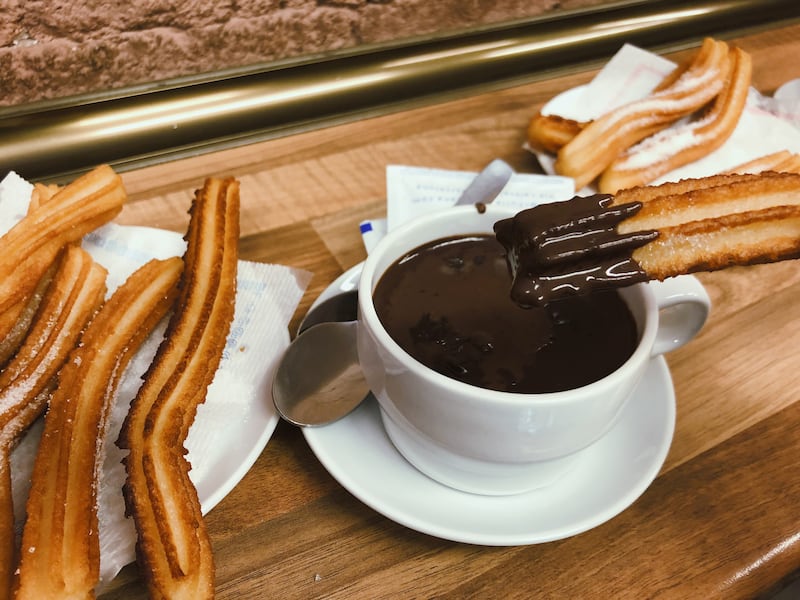
That evening we return to our Airbnb to spend an hour tiptoeing around the flat. We are not tip-toey enough, however, and the following morning I wake to a fresh note from the neighbour saying there’s no point in apologising if we’re going to keep dancing around above them like a herd of elephants – a direct quote. The note ends with a dark threat to call the police. I feel like marching down like an angry elephant and demanding the chocolates back but I am dissuaded. On reflection that is a good thing as I suspect there’s more to their anger than our elfin steps.
It seems likely our neighbours are routinely kept awake by rowdy tourist and they are probably fed up with the lot of us.
In that they’re not alone. Barcelona is a contrary city that has leaned left for more than a century and has long had an uncomfortable relationship with the tourist dough that feeds it. Just like in the Canaries, where residents have taken to the streets in recent months protesting at the scale of badly managed tourism, Barcelona is bursting at the seams and at constant risk of being overwhelmed.
The problem is exacerbated because it’s a hub for cruise ships with more than three million cruising tourists coming and going a year. Of course I see myself as a better class of tourist than those cruisers but – for full disclosure – I’ve also been among them.
But don’t tell anyone in Barcelona I said that.
After a hipster brunch near our Airbnb we take a short metro ride to the Sagrada Família, one of the wonders of the modern world or – if you are George Orwell – a monumental atrocity.
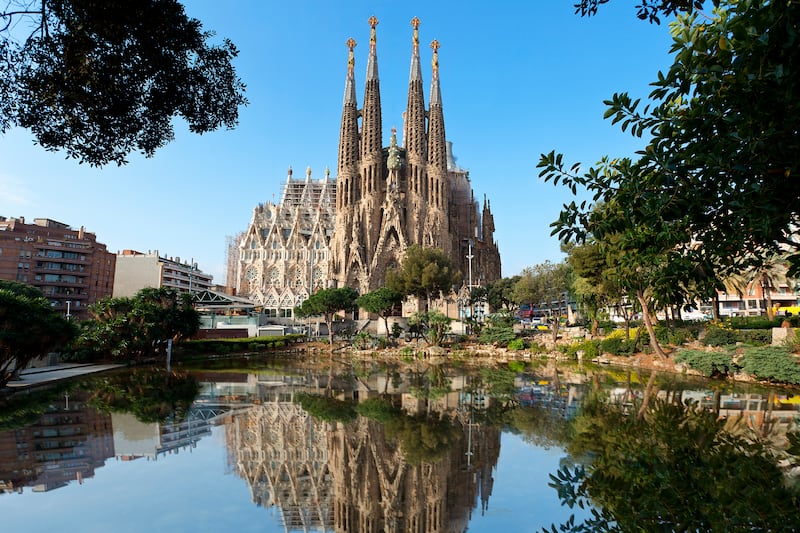
In a withering assessment of it in Homage to Catalonia, his memoir of the months he spent fighting for the anarchists against the fascists on the front lines of the Spanish civil war – and then fighting the Communists behind those lines in a civil war within a civil war – he wrote that “unlike most of the churches in Barcelona, [the Sagrada] was not damaged during the revolution – it was spared because of its ‘artistic value’, people said. I think the Anarchists showed bad taste in not blowing it up when they had the chance.”
It is a harsh assessment of a wild and free-flowing church that won’t be finished until 2026, almost 150 years after building work started.
[ Sagrada Família church, started in 1882, ‘will be completed in 2026’Opens in new window ]
Finished or not, it’s swarming with tourists and as far from the monastic quiet you might hope for in a centre of spirituality as you could get. Yet another reason for Barcelona to hate us.
On the way back to the centre we march down Passeig de Gracia again, past two of Gaudi’s other architectural wonders: La Pedrera, which is a Unesco World Heritage site, and Casa Batlló.
Another whole day is spent shopping, in a session that includes a financially ruinous trip to Sephora. If you’re unfamiliar with the name, all I can say is that it sells absolutely everything you could possibly need for the most elaborate of skincare regimes.
I’ve toured many of Europe’s Sephoras but what makes the Barcelona one special is a twisty slide entrance beloved of the Insta set. I ended up going down the Sephora slide many more times than is seemly for a man of advancing years, although the presence of a six-year-old by my side shouting “Again, again!” offers some cover.
We also spend hours in the cool boutiques and vintage shops in El Born, a warren of streets largely devoid of the tourist rabble despite being no more than a kilometre away from La Rambla via the Gothic Quarter.
Shopping aside, there’s the culture. The Picasso museum is worth a few hours of any tourist’s time and if the tourist times it right, they won’t have to stand in line enduring the baleful glares of locals as they wait. The Moko Gallery is less busy and full of modern artworks including Banksy, Warhol, Basquiat and Keith Haring, as well as some “digital immersive art” and some – ridiculous, to this uncultured eye at any rate – non-fungible tokens, or NFTs if you prefer.
The open-top bus tour is mildly diverting although, Gaudí aside, Barcelona lacks the instantly recognisable must-see landmarks of Paris, London or Rome.
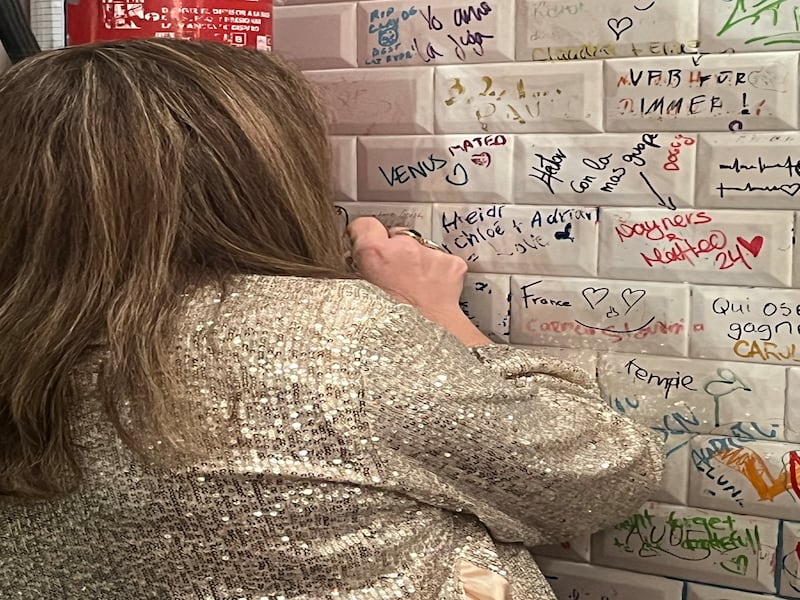
Away from the tourist traps, it is hard to find a bad or bad-value meal in Barcelona – and special mention goes to La Pepita on Calle Cargego, just off Passeig de Gracia. It’s a small, tiled tapas bar – diners are invited to write on the walls so bring a marker – with stunning food and wondrous prices which is why it’s heaving from the moment it opens, making reservations essential. We visit on three occasions and I can’t help thinking it’s the essence of Barcelona – small but perfect, modern but timeless, class but cheap.
Although unlike Barcelona, La Pepita always welcomes tourists with a smile, which is nice.



















